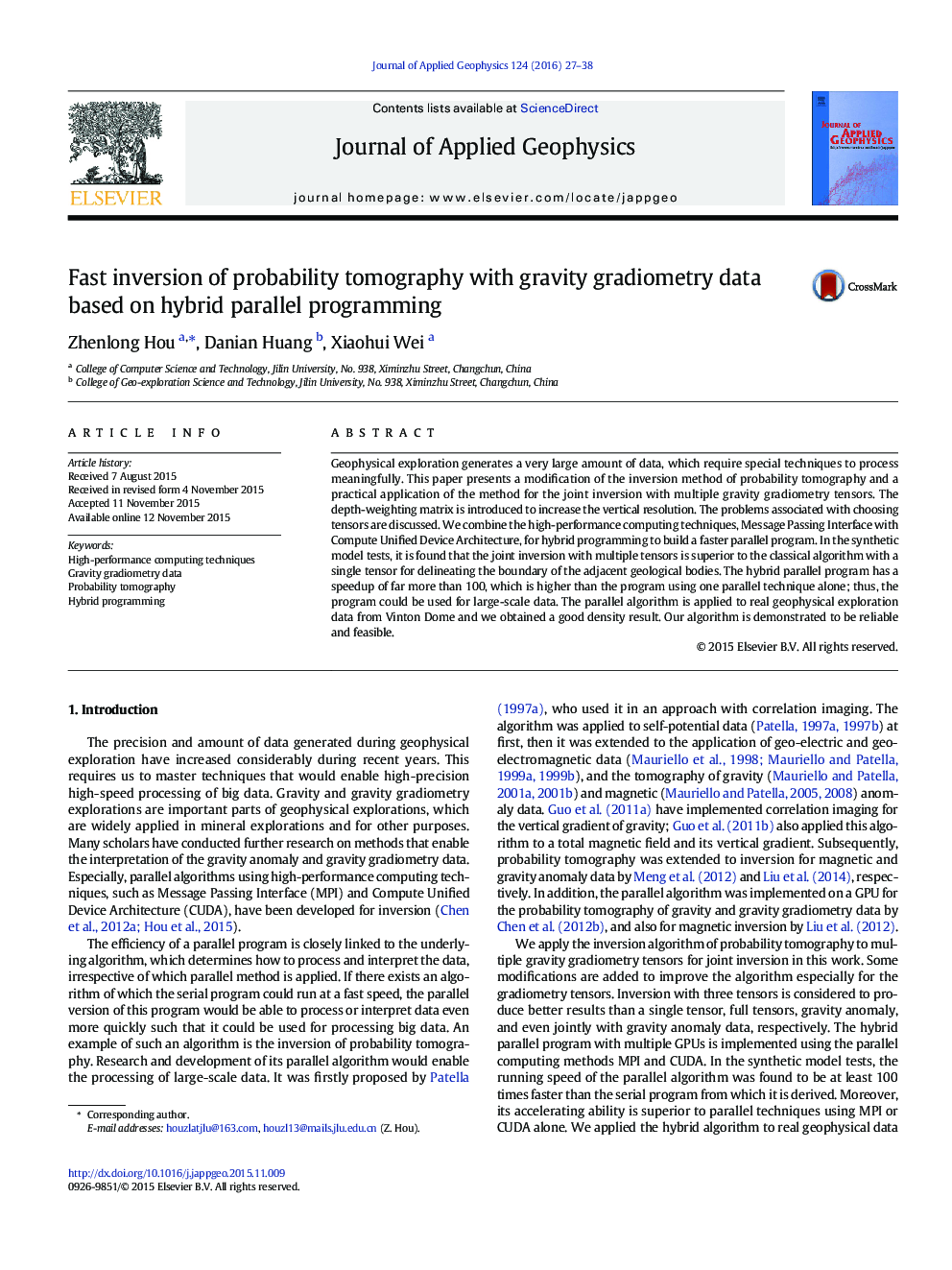| Article ID | Journal | Published Year | Pages | File Type |
|---|---|---|---|---|
| 4739859 | Journal of Applied Geophysics | 2016 | 12 Pages |
•We extended probability tomography inversion to multiple gravity gradiometry tensors•The inversion algorithm is modified and improved specially for the gravity gradiometry tensors•Hybrid parallel programming with MPI and CUDA for large-scale data is applied•The more accurate results are achieved in delineating the boundary of the adjacent bodies•Testing real geophysical data confirmed the algorithm to be reliable and feasible
Geophysical exploration generates a very large amount of data, which require special techniques to process meaningfully. This paper presents a modification of the inversion method of probability tomography and a practical application of the method for the joint inversion with multiple gravity gradiometry tensors. The depth-weighting matrix is introduced to increase the vertical resolution. The problems associated with choosing tensors are discussed. We combine the high-performance computing techniques, Message Passing Interface with Compute Unified Device Architecture, for hybrid programming to build a faster parallel program. In the synthetic model tests, it is found that the joint inversion with multiple tensors is superior to the classical algorithm with a single tensor for delineating the boundary of the adjacent geological bodies. The hybrid parallel program has a speedup of far more than 100, which is higher than the program using one parallel technique alone; thus, the program could be used for large-scale data. The parallel algorithm is applied to real geophysical exploration data from Vinton Dome and we obtained a good density result. Our algorithm is demonstrated to be reliable and feasible.
